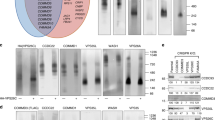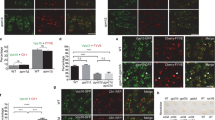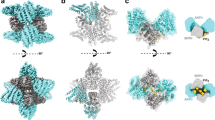Abstract
COPII coat proteins are required for direct capture of cargo and SNARE proteins into transport vesicles from the endoplasmic reticulum (ER). Cargo and SNARE capture occurs during the formation of a 'prebudding complex' comprising a cargo, Sar1p-GTP and the COPII subunits Sec23/24p. The assembly and disassembly cycle of the prebudding complex on ER membranes is coupled to the Sar1p GTPase cycle. Using FRET to monitor a single round of Sec23/24p binding and dissociation from SNAREs in reconstituted liposomes, we show that Sec23/24p dissociates from v-SNARE and complexed t-SNARE with kinetics slower than Sar1p-GTP hydrolysis. Once Sec23/24p becomes associated with v-SNARE or complexed t-SNARE, the complex remains assembled during multiple rounds of Sar1p-GTP hydrolysis mediated by the GDP-GTP exchange factor Sec12p. These data suggest a model for the maintenance of kinetically stable prebudding complexes during the Sar1p GTPase cycle that regulates cargo sorting into transport vesicles.
This is a preview of subscription content, access via your institution
Access options
Subscribe to this journal
Receive 12 print issues and online access
$189.00 per year
only $15.75 per issue
Buy this article
- Purchase on Springer Link
- Instant access to full article PDF
Prices may be subject to local taxes which are calculated during checkout







Similar content being viewed by others
References
Bonifacino, J.S. & Glick, B.S. The mechanisms of vesicle budding and fusion. Cell 116, 153–166 (2004).
Jahn, R., Lang, T. & Sudhof, T.C. Membrane fusion. Cell 112, 519–533 (2003).
Newman, A.P., Shim, J. & Ferro-Novick, S. BET1, BOS1, and SEC22 are members of a group of interacting yeast genes required for transport from the endoplasmic reticulum to the Golgi complex. Mol. Cell. Biol. 10, 3405–3414 (1990).
Hardwick, K.G. & Pelham, H.R. SED5 encodes a 39-kD integral membrane protein required for vesicular transport between the ER and the Golgi complex. J. Cell Biol. 119, 513–521 (1992).
Cao, X. & Barlowe, C. Asymmetric requirements for a Rab GTPase and SNARE proteins in fusion of COPII vesicles with acceptor membranes. J. Cell Biol. 149, 55–66 (2000).
Parlati, F. et al. Topological restriction of SNARE-dependent membrane fusion. Nature 407, 194–198 (2000).
Barlowe, C. et al. COPII: a membrane coat formed by Sec proteins that drive vesicle budding from the endoplasmic reticulum. Cell 77, 895–907 (1994).
Nakano, A. & Muramatsu, M. A novel GTP-binding protein, Sar1p, is involved in transport from the endoplasmic reticulum to the Golgi apparatus. J. Cell Biol. 109, 2677–2691 (1989).
Barlowe, C. & Schekman, R. SEC12 encodes a guanine-nucleotide-exchange factor essential for transport vesicle budding from the ER. Nature 365, 347–349 (1993).
Nishikawa, S. & Nakano, A. Identification of a gene required for membrane protein retention in the early secretory pathway. Proc. Natl. Acad. Sci. USA 90, 8179–8183 (1993).
Sato, M., Sato, K. & Nakano, A. Endoplasmic reticulum localization of Sec12p is achieved by two mechanisms: Rer1p-dependent retrieval that requires the transmembrane domain and Rer1p-independent retention that involves the cytoplasmic domain. J. Cell Biol. 134, 279–293 (1996).
Bi, X., Corpina, R.A. & Goldberg, J. Structure of the Sec23/24–Sar1 pre-budding complex of the COPII vesicle coat. Nature 419, 271–277 (2002).
Mossessova, E., Bickford, L.C. & Goldberg, J. SNARE selectivity of the COPII coat. Cell 114, 483–495 (2003).
Miller, E.A. et al. Multiple cargo binding sites on the COPII subunit Sec24p ensure capture of diverse membrane proteins into transport vesicles. Cell 114, 497–509 (2003).
Kuehn, M.J., Herrmann, J.M. & Schekman, R. COPII-cargo interactions direct protein sorting into ER-derived transport vesicles. Nature 391, 187–190 (1998).
Antonny, B. & Schekman, R. ER export: public transportation by the COPII coach. Curr. Opin. Cell Biol. 13, 438–443 (2001).
Antonny, B., Madden, D., Hamamoto, S., Orci, L. & Schekman, R. Dynamics of the COPII coat with GTP and stable analogues. Nat. Cell Biol. 3, 531–537 (2001).
Yoshihisa, T., Barlowe, C. & Schekman, R. Requirement for a GTPase-activating protein in vesicle budding from the endoplasmic reticulum. Science 259, 1466–1468 (1993).
Sato, K. & Nakano, A. Reconstitution of coat protein complex II (COPII) vesicle formation from cargo-reconstituted proteoliposomes reveals the potential role of GTP hydrolysis by Sar1p in protein sorting. J. Biol. Chem. 279, 1330–1335 (2004).
Springer, S. & Schekman, R. Nucleation of COPII vesicular coat complex by endoplasmic reticulum to Golgi vesicle SNAREs. Science 281, 698–700 (1998).
Matsuoka, K. et al. COPII-coated vesicle formation reconstituted with purified coat proteins and chemically defined liposomes. Cell 93, 263–275 (1998).
Doms, R.W., Keller, D.S., Helenius, A. & Balch, W.E. Role for adenosine triphosphate in regulating the assembly and transport of vesicular stomatitis virus G protein trimers. J. Cell Biol. 105, 1957–1969 (1987).
Emery, G., Rojo, M. & Gruenberg, J. Coupled transport of p24 family members. J. Cell Sci. 113, 2507–2516 (2000).
Otte, S. & Barlowe, C. The Erv41p–Erv46p complex: multiple export signals are required in trans for COPII-dependent transport from the ER. EMBO J. 21, 6095–6104 (2002).
Nufer, O., Kappeler, F., Guldbrandsen, S. & Hauri, H.P. ER export of ERGIC-53 is controlled by cooperation of targeting determinants in all three of its domains. J. Cell Sci. 116, 4429–4440 (2003).
Sato, K. & Nakano, A. Oligomerization of a cargo receptor directs protein sorting into COPII-coated transport vesicles. Mol. Biol. Cell 14, 3055–3063 (2003).
Presley, J.F. et al. Dissection of COPI and Arf1 dynamics in vivo and role in Golgi membrane transport. Nature 417, 187–193 (2002).
Goldberg, J. Decoding of sorting signals by coatomer through a GTPase switch in the COPI coat complex. Cell 100, 671–679 (2000).
Bigay, J., Gounon, P., Robineau, S. & Antonny, B. Lipid packing sensed by ArfGAP1 couples COPI coat disassembly to membrane bilayer curvature. Nature 426, 563–566 (2003).
Saito, Y., Kimura, K., Oka, T. & Nakano, A. Activities of mutant Sar1 proteins in guanine nucleotide binding, GTP hydrolysis, and cell-free transport from the endoplasmic reticulum to the Golgi apparatus. J. Biochem. 124, 816–823 (1998).
Matsuoka, K. & Schekman, R. The use of liposomes to study COPII- and COPI-coated vesicle formation and membrane protein sorting. Methods 20, 417–428 (2000).
Umebayashi, K. & Nakano, A. Ergosterol is required for targeting of tryptophan permease to the yeast plasma membrane. J. Cell Biol. 161, 1117–1131 (2003).
Miller, C. & Racker, E. Fusion of phospholipid vesicles reconstituted with cytochrome c oxidase and mitochondrial hydrophobic protein. J. Membr. Biol. 26, 319–333 (1976).
Sato, K. & Nakano, A. Emp47p and its close homolog Emp46p have a tyrosine-containing endoplasmic reticulum exit signal and function in glycoprotein secretion in Saccharomyces cerevisiae. Mol. Biol. Cell 13, 2518–2532 (2002).
Acknowledgements
This work was supported by PRESTO, Japan Science and Technology Agency, by grants-in-aid from the Ministry of Education, Science, Sports and Culture of Japan, and by a fund from the Bioarchitect Research Project of RIKEN.
Author information
Authors and Affiliations
Corresponding author
Ethics declarations
Competing interests
The authors declare no competing financial interests.
Supplementary information
Supplementary Fig. 1
FRET between reconstituted MBP-CFP-Ufe1p and YFP-Sec24/23p. (PDF 414 kb)
Rights and permissions
About this article
Cite this article
Sato, K., Nakano, A. Dissection of COPII subunit-cargo assembly and disassembly kinetics during Sar1p-GTP hydrolysis. Nat Struct Mol Biol 12, 167–174 (2005). https://doi.org/10.1038/nsmb893
Received:
Accepted:
Published:
Issue Date:
DOI: https://doi.org/10.1038/nsmb893
This article is cited by
-
Nutrient deprivation alters the rate of COPII subunit recruitment at ER subdomains to tune secretory protein transport
Nature Communications (2023)
-
Bladder cancer therapy using a conformationally fluid tumoricidal peptide complex
Nature Communications (2021)
-
Sec16 alternative splicing dynamically controls COPII transport efficiency
Nature Communications (2016)
-
COPII and the regulation of protein sorting in mammals
Nature Cell Biology (2012)
-
Sec24p and Sec16p cooperate to regulate the GTP cycle of the COPII coat
The EMBO Journal (2012)



